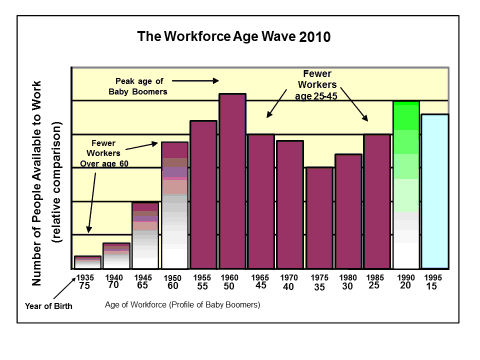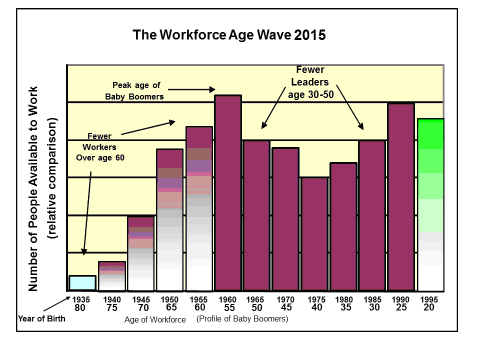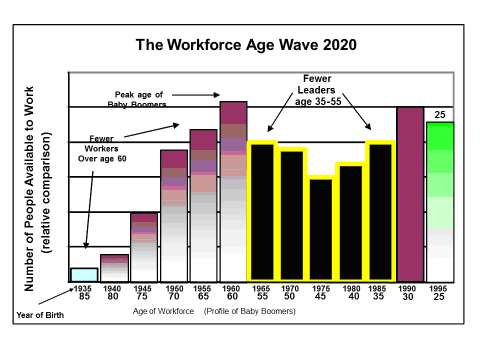How to avoid the 'Thelma & Louise' syndrome when it comes to succession planning
Nearly every healthcare leader is aware of the impact that the departure of the baby boomer generation is likely to create.
In fact, we have been aware of this interesting dynamic for over a decade. The data is clear: We have a problem.
Not only will the aging of America tax our healthcare delivery system's capacity, but we will also lose many of the seasoned leaders that have been guiding our industry for decades.
The first question that springs to mind is: "Who will fill the leadership void?"
The second question is: "Are you doing anything to address this situation with a strategy?"
If your answer is 'no' to question two, what do you think is going to happen?
Surely doing nothing is akin to the final scene in the movie "Thelma and Louise," where, rather than face the consequences, driving off a cliff is the option!
Leadership shortfalls ahead
The movie gives us a metaphor for the same desperate sort of scenario healthcare is facing with projected leadership shortfalls. As baby boomers continue to age and retire, there will inevitably be an escalating war for talent.
In 2010, the peak age of the baby boomers was approximately 50 (see Graph 1 below, which illustrates the relative number of Americans in the workforce by year of birth). There was a relative shortage of workers in the younger age ranges of 30 to 45, and the next wave of people born between 1985 and 1995 were either just entering or were about to enter the workforce. For those Americans age 60 to 75 in 2010, a significant number were no longer employed.
Graph 1
As we quickly approach 2015, it is hardly surprising to see these trends continue. And, we now see that there are fewer workers aged 30-50, as the peak baby boomer age reaches 55 years (see Graph 2). This shortage of workers in the key age range of 30-50 is significant not just because of the relative shortage of workers, but because a large proportion of organizational leaders fall within this age range.
Graph 2
Leadership crisis in healthcare?
The American College of Healthcare Executives, which has a membership of around 40,000 senior executives, representing approximately 60 percent of all U.S. hospitals, quotes on its web site that 46.3 percent of its members are over the age of 50 — providing another compelling indicator that the 'age wave' data does hold true for our own industry.
All of this is happening at a time when the healthcare delivery model is undergoing a paradigm change, as it moves from a vertical model to a value and wellness model that requires different skills and technical knowledge, as well as the ability to manage its increasing complexity.
To add to this conundrum, a recent analysis by Success Profiles, Inc. found an increasing number of healthcare leaders are struggling in these newly complex roles.
2020 and beyond
As we hit 2020, the relative number of leaders within the age range 35-55 will be at its lowest ebb (see Graph 3), just at time when there is the greatest need. Additionally, a 2012 survey by PwC of global CEOs found that "there will be a 15 percent decline in 35-44 year olds over the next 15 years."
According to a 2013 report by the Bureau of Labor Statistics, the healthcare and social assistance sector is projected to grow at an annual rate of 2.6 percent, adding 5 million jobs between 2012 and 2022. This accounts for nearly one-third of the total projected increase in jobs. The growth reflects, in part, the demand for healthcare workers to address the needs of an aging population.
Graph 3
Effectively, leadership capabilities are retiring faster than they are being replaced, and yet many CEOs are planning on downgrading investments in leadership development and continuity.
With all of this foresight you would think that there would be a genuine sense of urgency within the healthcare industry to rethink their strategy to address the leadership and management void that is already upon us, but the silence is deafening.
The die is cast. And while we cannot yet clone mature, well trained, technically able, behaviorally adept and flexible leaders, we either invest the time, energy and finances to develop a clear strategy or we really do have a serious problem. How many of us have a genuine grasp of the talent within our own facilities and what will be needed to develop each potential candidate for the roles of the future?
It can take many years to develop individual leaders. It is virtually impossible to know how much a leader can improve if you don't know how effective he or she is to begin with. Meanwhile, we have the opportunity to ensure the right people are in the right roles by improving leadership appointment practices as much as possible, improving the odds of success, by matching the attributes of a leader to the degree of difficulty of the role.
It is about objectively measuring what you have in terms of your current leadership effectiveness and then creating a robust, objective succession plan, which requires a high-touch approach and a business intelligence approach, not bias.
During a conversation earlier this week the following quip was made; "Well as the Baby Boomers retire and age, at least hospitals know that they are going to have increasing volumes of patients over the coming years."
The reply was, "And who is going to look after them?"
Tom Olivo is the founding partner in the consulting firm Healthcare Performance Solutions and the president of Success Profiles, Inc. Established in 1990, Success Profiles designs and provides organizational performance measurement instruments and database management services to clients, management consulting firms and professional associations. In his professional career, Mr. Olivo has over 25 years of experience in identifying, measuring and comparing the “commonalities” of highly successful athletes, business leaders and organizations. He has worked in a multitude of industries with thousands of senior executives and managers, emphasizing the importance of business analytics and getting the right people in the right roles

